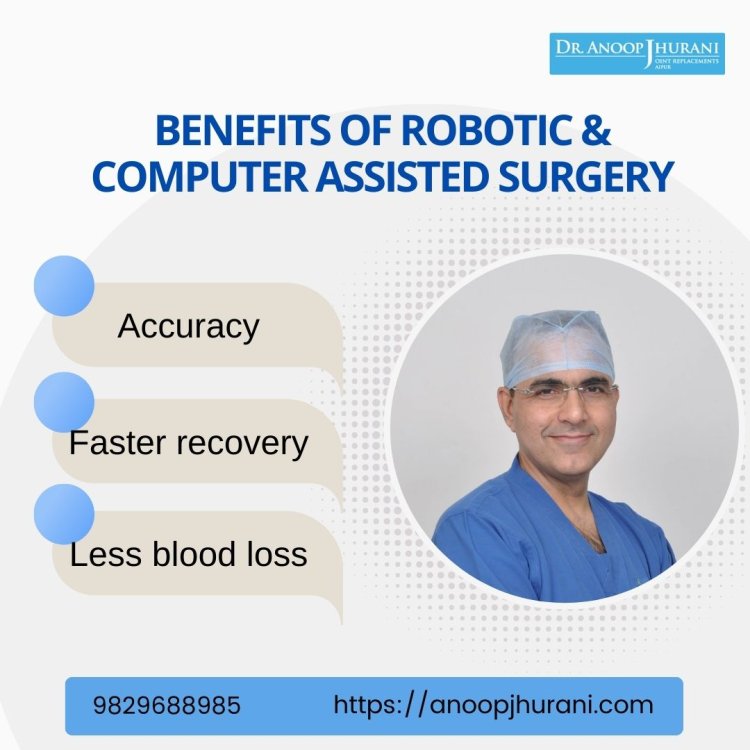Benefits of robotic and computer-assisted knee replacement
Dr. Anoop Jhurani is one of the best hip & knee replacement doctors in Jaipur. He has performed over 12,000 successful Hip & Knee surgeries.
Share this Post to earn Money ( Upto ₹100 per 1000 Views )

Robotic and computer-assisted surgery has revolutionized the field of orthopedics, providing numerous benefits for patients undergoing joint replacement procedures. Let's explore the advantages of robotic and computer-assisted knee replacement surgery in more detail:
1. Accuracy: Robotic and computer-assisted systems offer precise guidance and real-time feedback, enhancing the accuracy of implant placement and alignment. This leads to improved joint function and stability.
2. Improved Alignment and Balance: The advanced technology used in robotic and computer-assisted surgery ensures optimal alignment and balance of the joint, reducing the risk of complications and implant failure.
3. Lower Early Failure Rate: With improved accuracy and alignment, the early failure rate of joint replacements is significantly reduced, resulting in better long-term outcomes for patients.
4. Reduced Joint Pain: The precise positioning of the implant and improved joint alignment can alleviate joint pain, allowing patients to experience relief and improved mobility.
5. Extended Implant Longevity: The accurate placement of the implant and improved joint mechanics achieved through robotic and computer-assisted surgery can extend the lifespan of the implant, reducing the need for revision surgeries in the future.
6. Reduced Blood Loss: Robotic and computer-assisted surgery techniques are associated with reduced blood loss during the procedure, minimizing the need for blood transfusions and promoting faster recovery.
7. Less Scarring: The smaller incisions used in robotic and computer-assisted surgeries result in smaller scars, improving the cosmetic outcome and reducing postoperative discomfort.
8. Faster Recovery Time: Patients undergoing robotic and computer-assisted surgery typically experience faster recovery than traditional open surgeries. This allows them to resume their daily activities and regain mobility more quickly.
9. Shorter Hospitalization: Due to the minimally invasive nature of these techniques and the accelerated recovery, patients may require shorter hospital stays, leading to reduced healthcare costs and improved patient satisfaction.
Robotic and computer-assisted surgery has transformed joint replacement procedures, offering greater precision, improved outcomes, and enhanced patient experiences. Consult with a qualified orthopedic surgeon to determine if robotic or computer-assisted surgery suits your specific condition and goals.






